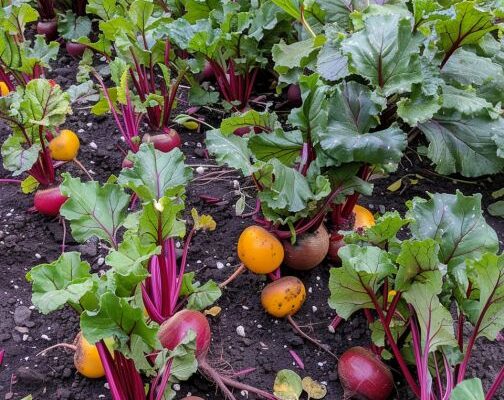Beets are a nutritious and vibrant addition to any garden. Often prized for their sweet, earthy flavor and multitude of health benefits, growing your own beets can be both rewarding and economical. Whether you’re a seasoned gardener or a beginner looking to try your hand at cultivating beets, understanding the right techniques is key to a successful harvest. By following some expert tips, you can avoid common pitfalls and ensure that your beet crop is vibrant, tasty, and plentiful, saving you money and trips to the grocery store.
In the following article, we’ll delve into ten comprehensive tips that every gardener should employ to maximize their beet production. From soil preparation to pest management, each tip is designed to enrich your horticultural experience and bring you closer to harvesting the perfect beet. Say goodbye to less-than-satisfactory yields and hello to a flourishing beet bounty that will be the envy of your neighbors. Continue reading to become the expert of your own thriving beet garden.

1. Choose the Right Varieties
Selecting the appropriate beet varieties for your climate and soil can make a significant difference in the success of your crop. Research the types that grow well in your region, and consider different colors and sizes to diversify your garden.
2. Test and Amend Your Soil
Beets prefer well-draining, loamy soil with a pH between 6.0 and 7.
0. Before planting, it’s crucial to test your soil and amend it with organic matter or pH adjusters to create an optimal growing environment.
3. Sow Seeds at the Right Time
Timing is critical when planting beet seeds. They thrive in cooler temperatures, so sow seeds in early spring or late summer, depending on your climate, for a successful harvest.
4. Plant Properly
Space your beet seeds appropriately to give each seedling room to grow. Plant them about 1 inch deep and 1 to 2 inches apart. Rows should be spaced about 12 to 18 inches apart.
5. Thin Seedlings Early
Thinning is crucial to prevent overcrowding, which can lead to small and underdeveloped beets. When seedlings reach about 2 inches tall, thin them to stand 3 to 4 inches apart.
6. Keep the Soil Moist
Beets need consistent moisture for uniform growth. Ensure that your garden receives at least 1 inch of water per week, either from rainfall or irrigation.
7. Mulch to Retain Moisture
Mulching helps retain soil moisture, prevents weeds, and keeps soil temperature consistent. Apply a layer of organic mulch, such as straw or shredded leaves, around your beets.
8. Manage Pests and Diseases
Keep an eye out for common beet pests like leaf miners and flea beetles. Rotate crops and use row covers to prevent these issues and inspect your plants regularly for signs of disease.
9. Fertilize Appropriately
Beets can benefit from fertilization, but the right balance is key. Use a low-nitrogen, high-phosphorus fertilizer to encourage root development without excessive top growth.
10. Harvest at the Right Size
Beets can be harvested when they are about the size of a golf ball but are often grown to the size of a tennis ball. Do not wait too long, as excessively large beets can become tough and woody.



